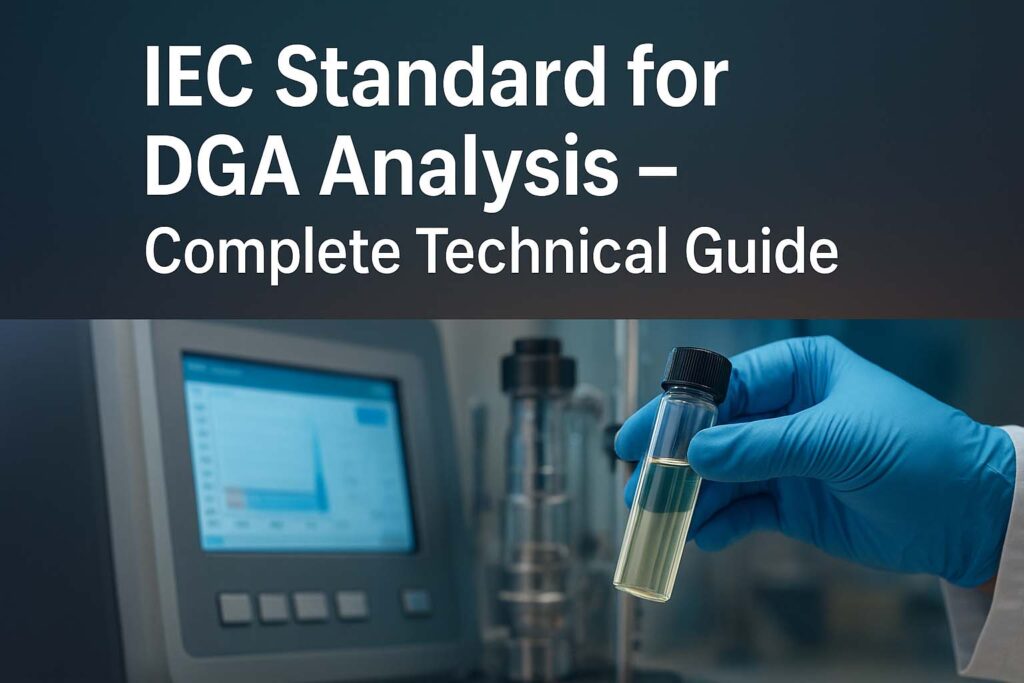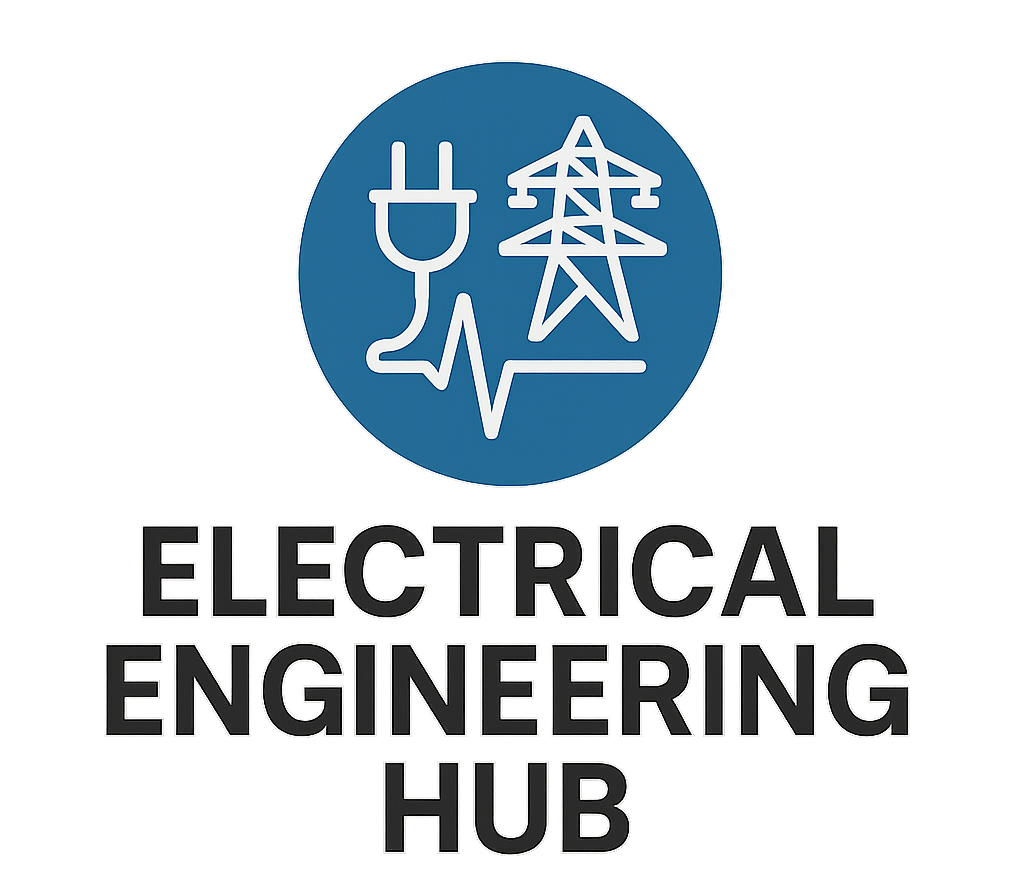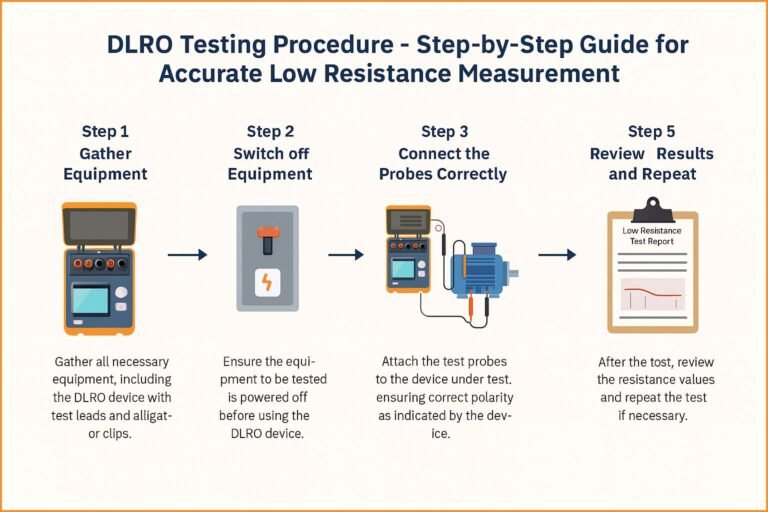IEC Standard for DGA Analysis – Complete Technical Guide
Dissolved Gas Analysis (DGA) is one of the most reliable techniques for detecting and diagnosing faults in oil-filled transformers. The IEC standard for DGA analysis provides clear guidelines to ensure consistency, accuracy, and reliability in gas measurement and interpretation. Following these standards helps asset managers detect issues early, prevent catastrophic failures, and extend transformer life.
Table of Contents
Table of Contents

The International Electrotechnical Commission (IEC) has published detailed procedures under standards like IEC 60567 and IEC 60599, which define how gases should be extracted, measured, and analyzed. These guidelines are widely adopted in the power industry to ensure uniform interpretation across laboratories and utilities.
Understanding the IEC standard for DGA analysis is essential for engineers, maintenance teams, and reliability professionals. This standard not only defines how to test but also explains how to interpret gas patterns that reveal specific fault types. It also ensures that different organizations can share results without inconsistencies caused by differing methods.
Key Takeaways:
- IEC 60567 covers sampling and analysis procedures, while IEC 60599 covers interpretation rules.
- DGA testing detects thermal faults, electrical discharges, and insulation degradation early.
- The standard uses specific gas ratio methods to classify faults.
What is the IEC Standard for DGA Analysis?
The IEC standard for DGA analysis is a set of guidelines developed to standardize how dissolved gases in transformer oil are tested and interpreted. It ensures that measurements are reproducible, accurate, and comparable regardless of where the analysis is conducted.
The main objectives of the IEC DGA standard are:
- To establish uniform sampling methods to prevent contamination or gas loss.
- To define precise laboratory procedures for measuring gas concentrations.
- To provide fault interpretation methods based on gas ratios and total gas content.
The two main documents are:
- IEC 60567 – “Oil-filled electrical equipment – Sampling of gases and analysis of free and dissolved gases – Guidance”
- IEC 60599 – “Mineral oil-filled electrical equipment – Interpretation of dissolved and free gases analysis”
These standards are complementary. One ensures accurate data collection, the other ensures accurate fault diagnosis.
Know more about IEC Standard for Battery Charger – Complete Technical Guide
Importance of IEC Standard for DGA Analysis
Transformers are expensive, critical assets in power systems. Any unexpected failure can cause large-scale outages and costly downtime. The IEC standard for DGA analysis provides a preventive approach by detecting internal faults long before they cause severe damage.
Without a standardized approach, two labs could analyze the same oil sample and give different results. This could lead to wrong maintenance decisions. By following IEC guidelines, utilities ensure that results are consistent and reliable.
Some benefits of compliance with IEC DGA standards include:
- Early fault detection and planned maintenance.
- Reduced risk of catastrophic transformer failures.
- Better data sharing between operators, manufacturers, and service providers.
Dissolved Gases Monitored Under IEC DGA Standards
The IEC standard for DGA analysis specifies several key gases that are monitored. Each gas is linked to certain types of faults inside the transformer.
| Gas | Common Source | Possible Fault Type (IEC 60599) |
|---|---|---|
| Hydrogen (H₂) | Partial discharges | Corona, low-energy arcing |
| Methane (CH₄) | Oil decomposition at low temperatures | Overheating of oil < 300°C |
| Ethane (C₂H₆) | Oil overheating | Thermal faults (low temp) |
| Ethylene (C₂H₄) | High temperature oil cracking | Hot spots > 700°C |
| Acetylene (C₂H₂) | High energy arcing | Severe electrical fault |
| Carbon Monoxide (CO) | Cellulose insulation degradation | Thermal decomposition of paper |
| Carbon Dioxide (CO₂) | Paper insulation aging | Normal operation or thermal fault |
By measuring these gases and their relative concentrations, engineers can identify whether a transformer fault is thermal, electrical, or mechanical.
Sampling and Testing as per IEC 60567
IEC 60567 outlines the correct way to collect and prepare oil samples for DGA. The accuracy of DGA results depends heavily on how the sample is taken and handled.
Some key guidelines include:
- Samples should be taken from a point where oil circulation is active to avoid stagnant pockets.
- Containers must be clean, dry, and gas-tight.
- Samples should be analyzed as soon as possible to prevent gas loss or alteration.
Laboratories then use gas chromatography to measure the amount of each dissolved gas. Calibration with certified reference gases ensures accuracy and repeatability.
Know more about Short Circuit Calculation Method
Fault Interpretation as per IEC 60599
Once gas concentrations are measured, IEC standard for DGA analysis provides rules for interpreting them. IEC 60599 primarily uses gas ratio methods and total gas concentration limits.
Common Gas Ratios Used:
- R1 = CH₄ / H₂
- R2 = C₂H₂ / C₂H₄
- R3 = C₂H₄ / C₂H₆
By comparing these ratios against IEC-defined ranges, faults are classified into categories like:
- PD (Partial Discharges)
- D1 (Low-energy discharges)
- D2 (High-energy discharges)
- T1 (Thermal faults < 300°C)
- T2 (Thermal faults 300°C – 700°C)
- T3 (Thermal faults > 700°C)
| Fault Type | CH₄/H₂ | C₂H₂/C₂H₄ | C₂H₄/C₂H₆ |
|---|---|---|---|
| PD | < 0.1 | < 0.5 | < 1 |
| D1 | 0.1 – 1 | > 1 | 1 – 4 |
| D2 | > 1 | > 3 | > 4 |
| T1 | > 1 | < 0.5 | < 1 |
| T2 | > 1 | 0.5 – 3 | 1 – 4 |
| T3 | > 1 | < 0.5 | > 4 |
These diagnostic ratios are considered one of the most reliable ways to detect developing transformer faults before visible symptoms appear.
Know more about Transformer Cooling Methods: ONAN, ONAF, OFAF & More
Total Dissolved Combustible Gas (TDCG) Thresholds
Apart from gas ratios, the IEC standard for DGA analysis also uses the total dissolved combustible gas (TDCG) concentration as an indicator of transformer health.
Typical IEC guidance:
- < 300 ppm – Normal operation.
- 300–720 ppm – Increased monitoring needed.
- > 720 ppm – Investigate and plan maintenance.
- > 1200 ppm – Immediate action recommended.
This threshold-based approach is useful for quick condition assessments without full ratio interpretation.
Maintenance Strategies Based on IEC DGA Results
When analysis indicates abnormal gas patterns, IEC recommends further investigation, such as:
- Increasing sampling frequency.
- Performing complementary tests like Furan analysis or oil dielectric strength tests.
- Conducting thermal imaging or ultrasonic inspections.
In some cases, controlled shutdown and internal inspection may be necessary to prevent catastrophic failure.
Integration with Condition Monitoring Programs
Many utilities integrate IEC standard for DGA analysis into their online transformer monitoring systems. Real-time sensors measure gas levels and trigger alarms when IEC thresholds are crossed.
This proactive approach improves reliability and reduces unplanned outages. It also supports predictive maintenance, where interventions are based on actual asset condition instead of fixed schedules.
Know more about Star Delta Transformer Fault Current Distribution Explained
Why IEC DGA Standards Remain Globally Relevant
Although other standards exist, such as IEEE C57.104, the IEC approach is widely accepted internationally. It is especially favored in regions where power utilities operate under IEC compliance requirements.
The clarity of the IEC methodology, combined with its emphasis on accurate sampling and ratio-based diagnostics, makes it a robust choice for transformer fleet management worldwide.
Final Thoughts on IEC Standard for DGA Analysis
The IEC standard for DGA analysis provides a powerful framework for transformer condition monitoring. By following IEC 60567 for sampling and IEC 60599 for interpretation, operators can detect faults early, schedule repairs, and avoid costly failures.
Know more about Differential Protection of Transformer: Working, Settings & Calculation
When combined with modern online monitoring tools, this method becomes an essential part of any asset management strategy in the power sector. Consistent application of IEC guidelines ensures transformer reliability, improves safety, and extends service life.
FAQs
Q: What is the IEC standard for DGA test?
A: The IEC 60567 standard specifies procedures for dissolved gas analysis (DGA) in mineral oil-filled electrical equipment to detect incipient faults.
Q: What is the IEC standard 60296?
A: IEC 60296 defines specifications for unused mineral insulating oils for electrical equipment, including properties and testing methods.
Q: What is the ASTM standard for DGA?
A: ASTM D3612 outlines methods for extraction and analysis of gases dissolved in electrical insulating oil for fault diagnosis.
Q: What is the IEC standard for power system analysis?
A: IEC 60909 provides methods for short-circuit current calculation in three-phase AC power systems.
Q: What is the IEC 62446 standard?
A: IEC 62446 specifies requirements for PV system documentation, commissioning tests, and inspection procedures.
Q: What is the IEC 61439 standard?
A: IEC 61439 covers design, assembly, and testing of low-voltage switchgear and controlgear assemblies.
Q: What is the IEC 62368 standard?
A: IEC 62368 specifies safety requirements for audio/video, IT, and communication technology equipment.
Q: What is the IEC 60479 standard?
A: IEC 60479 defines the effects of electric current on humans and livestock, including shock hazard zones.
Q: What is IEC 60456 standard?
A: IEC 60456 specifies testing methods for performance of household washing machines.
Q: What is the DGA test analysis?
A: DGA test analysis measures dissolved gases in transformer oil to detect and diagnose internal faults.
Q: What is the ASTM method d4468 85?
A: ASTM D4468-85 provides guidelines for evaluating off-gassing in insulating materials.
Q: What is the ASTM F543 guideline?
A: ASTM F543 outlines specifications and test methods for metallic medical bone screws.
Q: What is the IEC 60364 standard?
A: IEC 60364 covers electrical installations of buildings, ensuring safety, functionality, and energy efficiency.
Q: What is the IEC 60228 standard?
A: IEC 60228 specifies conductor classes, sizes, and resistance requirements for electrical cables.
Q: What is IEC 60617?
A: IEC 60617 provides a standardized graphical symbol library for electrical diagrams.
Q: What is the IEC 62676 standard?
A: IEC 62676 defines performance and interoperability requirements for video surveillance systems.
Q: What is the IEC 62444 standard?
A: IEC 62444 specifies requirements for cable glands to ensure safe cable entry and sealing.
Q: What is the IEC 61267 standard?
A: IEC 61267 defines reference radiation qualities for medical diagnostic X-ray equipment testing.
Follow Us on Social:
Subscribe our Newsletter on Electrical Insights for latest updates from Electrical Engineering Hub
#IECStandardForDGAAnalysis, #DGAAnalysis, #TransformerMaintenance, #TransformerTesting, #IECStandards, #DissolvedGasAnalysis, #TransformerDiagnostics, #ElectricalStandards, #IEC60599, #IEC60567, #PowerTransformerTesting, #ConditionMonitoring, #ElectricalEngineering, #SubstationMaintenance, #TransformerConditionAssessment





